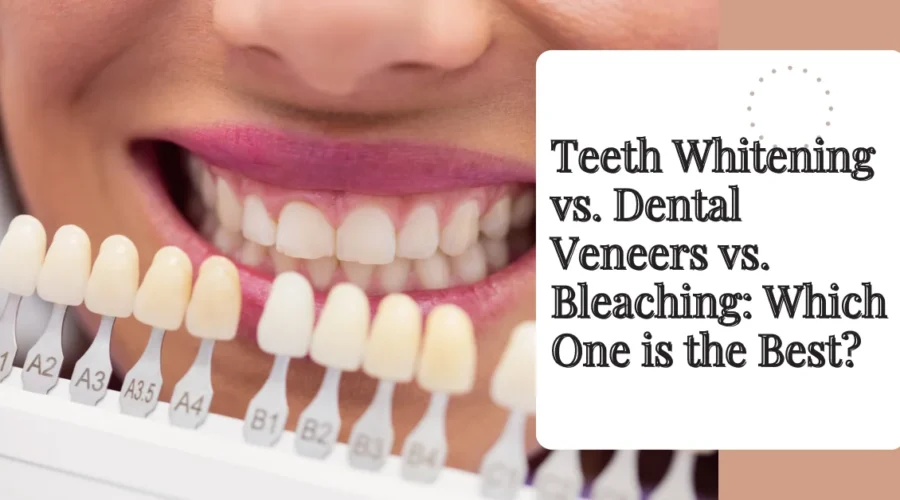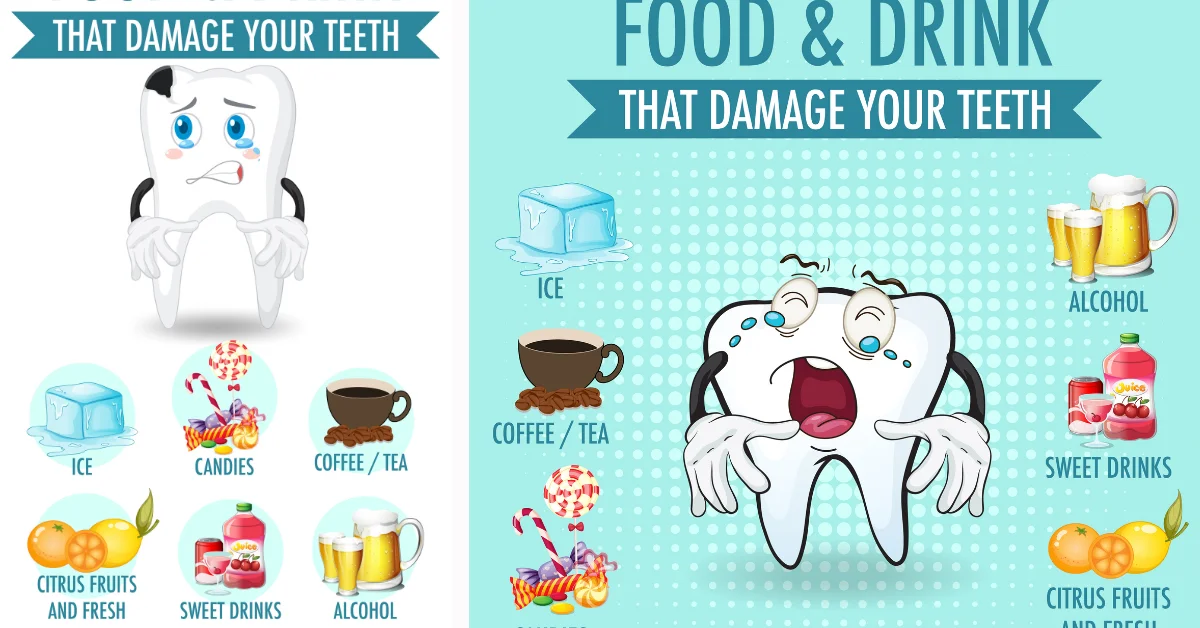Teeth Whitening vs. Dental Veneers vs. Bleaching
Teeth Whitening vs. Dental Veneers vs. Bleaching, Having a bright, dazzling smile is something that many people aspire to. However, the reality is that maintaining pearly white teeth is quite challenging. Our teeth are constantly exposed to staining agents from our favorite caffeinated food and beverages, sometimes due to poor oral hygiene. As a result, many individuals face the frustrating issue of stained teeth.
Fortunately, modern dentistry offers several treatment options, such as teeth whitening, dental veneers, and bleaching, to help restore that radiant smile. In this article, we will look into the main differences between these treatment processes and their merits and demerits.
Teeth Whitening
It is necessary to understand the comprehensive teeth whitening insights. Teeth whitening is a cosmetic dental procedure that aims to lighten the color of the teeth by removing stains and discoloration. It can be done in-office by a dental professional or at home using over-the-counter products.
Teeth whiteners use various active ingredients through toothpaste, mouthwashes, or over-the-counter products like whitening strips or gels. This method eliminates extrinsic stains caused by external factors such as coffee, tea, smoking, or certain foods. It is a non-invasive treatment that usually breaks down deep stains. As a result, the natural color of your teeth becomes more apparent, giving them a brighter and more vibrant appearance.
The process usually involves applying a gel-like solution onto your teeth using custom-made trays or strips. The solution then reacts with your tooth enamel to eliminate extrinsic (surface) and intrinsic (internal) stains. Some whitening treatments also utilize specialized light devices to accelerate the chemical reaction between the whitening agents and your teeth. Moreover, some teeth whiteners contain special agents like desensitizers to minimize tooth sensitivity during and after treatment.
Dental Veneers
Dental veneers are thin, custom-made shells designed to cover the front surface of the teeth. They can be made from porcelain or composite resin material. Once in place, dental veneers can effectively address various dental concerns. They can cover up chips, cracks, or stains on your teeth. Veneers can also alter the shape or length of your teeth, creating a more harmonious and balanced look.
Getting dental veneers starts with a consultation with a dentist who will assess your oral health. If veneers suit you, the next step involves preparing the teeth by removing a small amount of enamel. This is necessary to ensure a proper fit and seamless look once the veneers are applied.
Once your teeth have been prepped, impressions will be taken and sent to a dental lab where your custom veneers will be created. During this time, temporary veneers may be placed on your teeth as a temporary solution. Once ready, the permanent veneers will be carefully bonded to your teeth using a special adhesive material.
Bleaching
Teeth bleaching is often confused with teeth whitening; however, they are not synonymous. Teeth whitening refers to any process that restores natural tooth color. It removes debris and dirt from external (stains) and internal (pigmentation) sources without altering their intrinsic shade. On the other hand, teeth bleaching specifically targets stains caused by smoking, coffee consumption, or certain medications that make your tooth appear less white than it naturally should be. But both aim for the same destination, a brighter smile.
Teeth bleaching involves using a bleaching agent, such as hydrogen peroxide, to remove stains and discoloration. This process penetrates through the layers of enamel and breaks down the molecular bonds that cause staining. It oxidizes and breaks down stain molecules on the tooth’s surface. The bleach agent’s active ingredient releases oxygen molecules when it comes into contact with water or saliva in the mouth. These oxygen molecules penetrate the enamel to dissolve deep-set stains, giving your teeth a lighter appearance.
Comparison table of Teeth Whitening vs. Dental Veneers vs. Bleaching
| Aspect | Teeth Whitening | Dental Veneers | Bleaching |
| Purpose | Remove surface stains | Improve aesthetics | Remove deeper stains |
| Method | Chemical agents, gels, strips | Custom-made porcelain shells | Chemical agents |
| Application | DIY kits, dentist-supervised | Requires dental procedure | Dentist-supervised |
| Target | Surface enamel discoloration | Teeth shape/alignment issues | Deep-seated stains |
| Results | Gradual, temporary improvement | Permanent, immediate change | Noticeable improvement |
| Durability | Temporary | Long-lasting | Long-lasting |
| Teeth Removal | Not applicable | Minimal enamel removal | Not applicable |
| Suitability | Mild to moderate discoloration | Irregularities, damage | Deep-seated stains |
| Tooth Sensitivity | Temporary sensitivity | Minimal impact | Temporary sensitivity |
| Cost | Affordable | Expensive | Moderate to expensive |
| Maintenance | Periodic touch-ups required | Regular oral hygiene | Regular oral hygiene |
| Invasive Procedure | Non-invasive | Invasive | Non-invasive |
| Natural Tooth Alteration | Minimal | Alteration required | Minimal |
| Instant Results | No | Yes | Yes |
Wrap Up
Teeth whitening, dental veneers, and bleaching effectively clean your teeth stain. Teeth whitening is the most affordable option. It can be easily done at home or the dentist’s office. Dental veneers provide a longer-lasting solution for those who want to completely transform by covering up imperfections. Bleaching is a more intensive treatment that can provide dramatic results. Ultimately, the choice between these options depends on individual needs and preferences. Consult your dentist to determine the best method for you.



